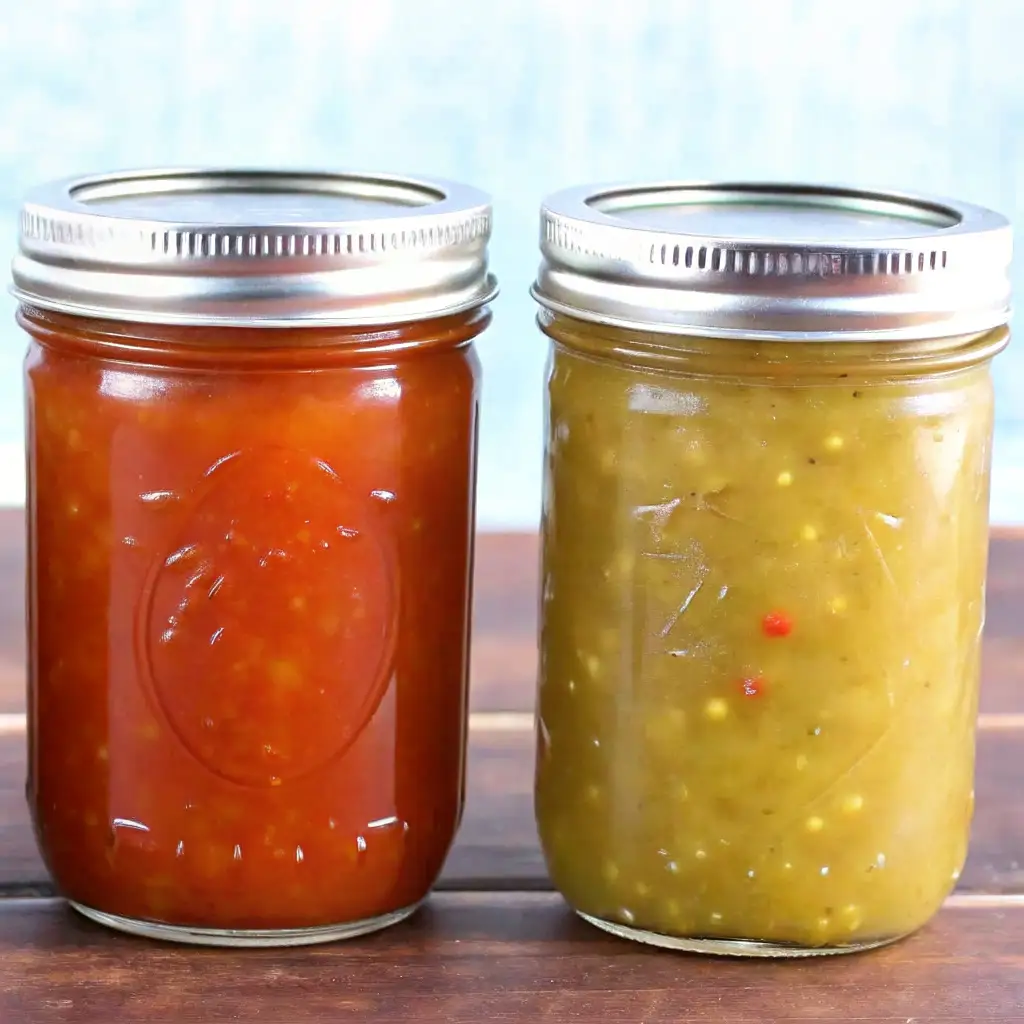Learn the science behind safe canning practices and discover which salsa recipe modifications are safe—and which could be deadly.

Table of Contents
Why Canning Safety Matters: Understanding the Botulism Risk
Home canning isn’t just cooking—it’s applied food science. When you seal a jar, you create an oxygen-free environment where deadly botulism bacteria can thrive if conditions aren’t perfect. Clostridium botulinum spores are everywhere in soil and on produce, harmless in open air but potentially lethal in sealed jars.
The key to safe canning lies in understanding three critical factors:
- pH levels below 4.6 (high-acid foods)
- Proper heat penetration to the jar’s center
- Tested processing times based on scientific studies
The Science of Tested Recipes: Your Safety Foundation
What Makes a Recipe “Tested”?
A tested canning recipe has undergone rigorous laboratory validation. Food scientists measure:
- Equilibrium pH after all ingredients combine
- Heat penetration rates using temperature probes
- Density and viscosity effects on processing time
- Microbial safety under various conditions
Trusted Sources for Safe Canning Recipes
Tier 1 (Highest Authority):
- National Center for Home Food Preservation (NCHFP)
- USDA Complete Guide to Home Canning
Tier 2 (Highly Reliable):
- University Extension programs (Michigan State, Wisconsin, Minnesota, Oregon State)
Tier 3 (Reliable with Updates):
- Ball Blue Book (current edition)
- Bernardin canning guides (current edition)
Understanding Salsa Recipe Components
The Tomato Base: Your Acidic Foundation
Tomatoes provide the acidic base, but their natural pH varies significantly. Modern varieties are often less acidic than heirloom types. This is why all tested recipes require added commercial acid—bottled lemon juice, lime juice, or vinegar with at least 5% acidity.
Key Rules:
- Never use fresh-squeezed citrus (acidity varies)
- Avoid tomatoes from dead or frost-killed vines
- Tomatillos can substitute for tomatoes measure-for-measure
The Low-Acid Ingredient Budget
Peppers, onions, garlic, and celery are low-acid foods. Each tested recipe allocates a specific “budget” for these ingredients. Never exceed this total amount—it’s calculated to maintain safe acidity levels.
The Acid Mandate: Non-Negotiable Safety
The added acid is your primary safety control. Rules include:
- Use only commercial bottled acids (5% acidity minimum)
- Never reduce the specified acid amount
- Add sugar to balance tartness if needed (doesn’t affect pH)
Safe Salsa Modifications: What You Can and Cannot Change
✅ SAFE Modifications
Spices and Seasonings:
- Increase, decrease, or eliminate salt, sugar, and dried spices
- These don’t affect pH or density
Pepper Substitutions:
- Swap pepper varieties measure-for-measure
- Replace 1 cup bell peppers with 1 cup jalapeños for heat
Onion Varieties:
- Red, yellow, and white onions are interchangeable
Reducing Low-Acid Ingredients:
- Use fewer peppers or onions than specified
- Makes the final product more acidic and safer
Acid Substitutions (One-Way Only):
- Replace vinegar with bottled lemon/lime juice
- Never substitute vinegar for citrus juice
❌ UNSAFE Modifications
Never Do These:
- Increase total low-acid vegetables beyond recipe amounts
- Add untested ingredients like corn, beans, or celery
- Use thickeners (flour, cornstarch) before canning
- Reduce the required acid amount
- Use fresh-squeezed citrus juice
- Use larger jar sizes than specified
- Add large amounts of fresh herbs
Quick Reference: Safe vs. Unsafe Salsa Changes
| Modification | Safe? | Reason |
|---|---|---|
| Substituting pepper types | ✅ SAFE | Maintains low-acid ratio |
| Increasing total peppers/onions | ❌ UNSAFE | Raises pH above safe level |
| Reducing peppers/onions | ✅ SAFE | Increases acidity |
| Adding corn or beans | ❌ UNSAFE | Untested low-acid additions |
| Adding thickeners | ❌ UNSAFE | Slows heat penetration |
| Adjusting salt/sugar | ✅ SAFE | Doesn’t affect pH |
| Changing dried spices | ✅ SAFE | Minimal pH impact |
| Reducing acid amount | ❌ UNSAFE | Critical safety control |
| Using fresh citrus | ❌ UNSAFE | Variable acidity |
| Using larger jars | ❌ UNSAFE | No tested processing times |
The Density Factor: Why Thickness Matters
Salsa density directly affects heat penetration during processing. Thick salsas heat more slowly, making standard processing times insufficient for safety.
Safe Thickening Options:
- Add tomato paste (acidic ingredient)
- Drain excess liquid from chopped tomatoes
- Thicken with cornstarch after opening jars
Creating Your Own Salsa Recipe Safely
Want to create a completely original salsa? Never attempt to can untested recipes—even home pH meters aren’t reliable for developing safe canning formulas.
Safe Alternatives:
- Refrigerate: Store fresh salsa up to one week
- Freeze: Long-term storage for months (texture may soften)
Common Canning Mistakes to Avoid
- Using heirloom recipes without safety testing
- Guessing at processing times for modified recipes
- Ignoring altitude adjustments for processing times
- Improper headspace affecting seal formation
- Reusing commercial jars not designed for home canning
The Bottom Line: Safety First
Canning safety isn’t about following arbitrary rules—it’s about preventing potentially fatal foodborne illness. Every guideline protects against the conditions that allow botulism to develop in sealed jars.
By understanding the science behind tested recipes, you can confidently customize your salsa within safe parameters. Adjust spices freely, swap pepper varieties, and reduce low-acid ingredients as desired. But never compromise on the critical safety controls: pH levels, processing times, and jar sizes.
Remember: When in doubt, don’t can it. Fresh storage and freezing are always safe alternatives for untested recipes.
Resources for Safe Canning
- NCHFP: National Center for Home Food Preservation
- USDA: Complete Guide to Home Canning
- Local Extension Offices: Contact your state university extension program
- Ball Canning: Current edition guides and supplies
Start your safe canning journey today—your family’s health depends on following these scientifically-proven guidelines.
